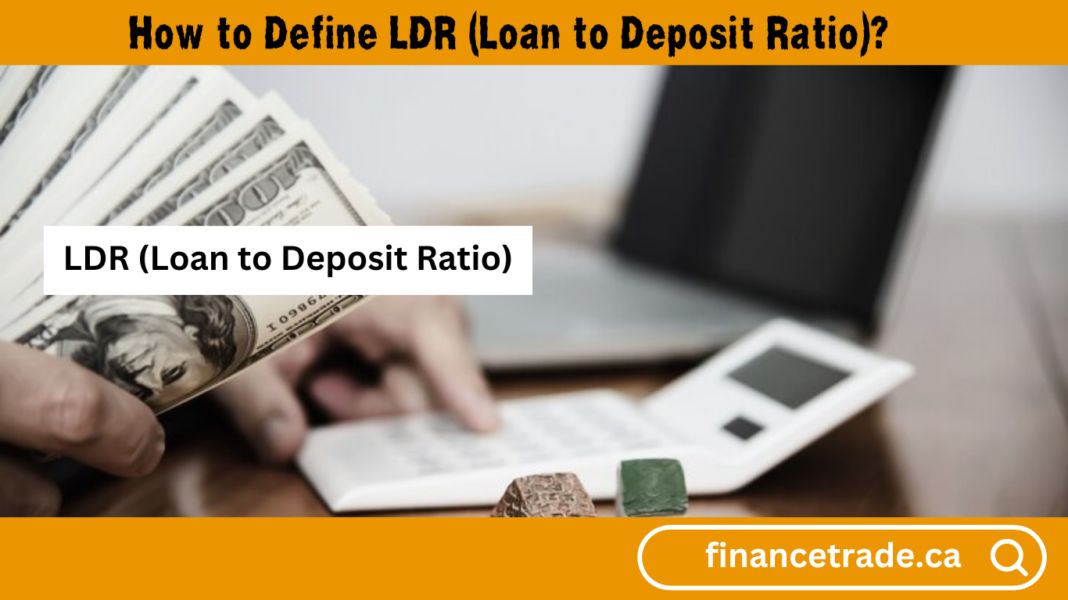The Loan-to-Deposit Ratio (LDR) is a critical metric in the banking sector. It measures the ratio of a bank’s total loans to its total deposits. The LDR evaluates a bank’s ability to efficiently use its deposits for lending purposes while maintaining sufficient liquidity to meet withdrawal demands.
LDR Formula:
The LDR is calculated using this formula:
LDR = (Total Loans / Total Deposits) × 100
For instance, if a bank has issued loans worth $500 million and holds deposits of $1 billion, its LDR equals 50%. This means the bank is using half of its deposits for lending.
Why is LDR Important?
- Liquidity Management: The LDR indicates a bank’s ability to meet customer withdrawal demands.
- Profitability Assessment: It helps evaluate how efficiently a bank converts its deposits into income-generating loans.
- Financial Stability: Regulators and investors use the LDR to assess a bank’s economic health and risk level.
What is a Healthy Loan Deposit Ratio?
An ideal LDR is typically between 80% and 90%, suggesting that a bank effectively balances lending and liquidity. This range ensures the bank has sufficient reserves to manage withdrawals while maximizing loan-generated profits.
Understanding High and Low LDR
High LDR:
- Indicates a bank heavily invests in lending activities.
- This could lead to profitability but increase liquidity risk, especially if withdrawal demands spike.
Low LDR:
- Reflects a conservative approach where the bank retains more deposits in reserve.
- Reduces risk but may hinder profitability.
Loan Deposit Ratio Illustrative Example
Consider Bank XYZ, which has:
- Loans issued: $600 million
- Deposits: $800 million
Using the LDR formula:
LDR = ($600M / $800M) × 100 = 75%
A 75% LDR reflects a balanced approach, combining profitability and liquidity management.
LDR vs. Loan-to-Value Ratio (LTV)
While the LDR evaluates a bank’s total loans compared to deposits, the Loan-to-Value Ratio (LTV) focuses on a specific loan’s risk, comparing the loan amount to the value of its collateral. For example, an LTV of 90% on a mortgage implies that the loan covers 90% of the property’s value.
Factors Affecting Loan Deposit Ratio LDR
- Economic Cycles: During recessions, loan demand may drop, reducing LDR.
- Regulatory Guidelines: Governments may impose LDR limits to ensure stability.
- Cost of Borrowing: Higher interest rates can lower loan demand, affecting LDR.
Benefits and Risks of High LDR
Advantages:
- Increased profitability through active lending.
- Better returns for shareholders.
Risks:
- LDRs above 100% indicate over-leverage, meaning the bank is lending more than its deposits, potentially leading to liquidity crises.
Modern Trends in Managing LDR
With technological advances, banks leverage online and mobile platforms to dynamically monitor and manage their LDR. This ensures they adapt to market conditions while maintaining optimal ratios.
Conclusion
The Loan-to-Deposit Ratio (LDR) is a vital metric for assessing a bank’s financial health, liquidity, and profitability. Striking the right balance in LDR is essential for banks to sustain operations, meet withdrawal demands, and generate returns. By understanding LDR, stakeholders—from investors to borrowers—can make informed decisions and gauge a bank’s performance in the financial ecosystem.


